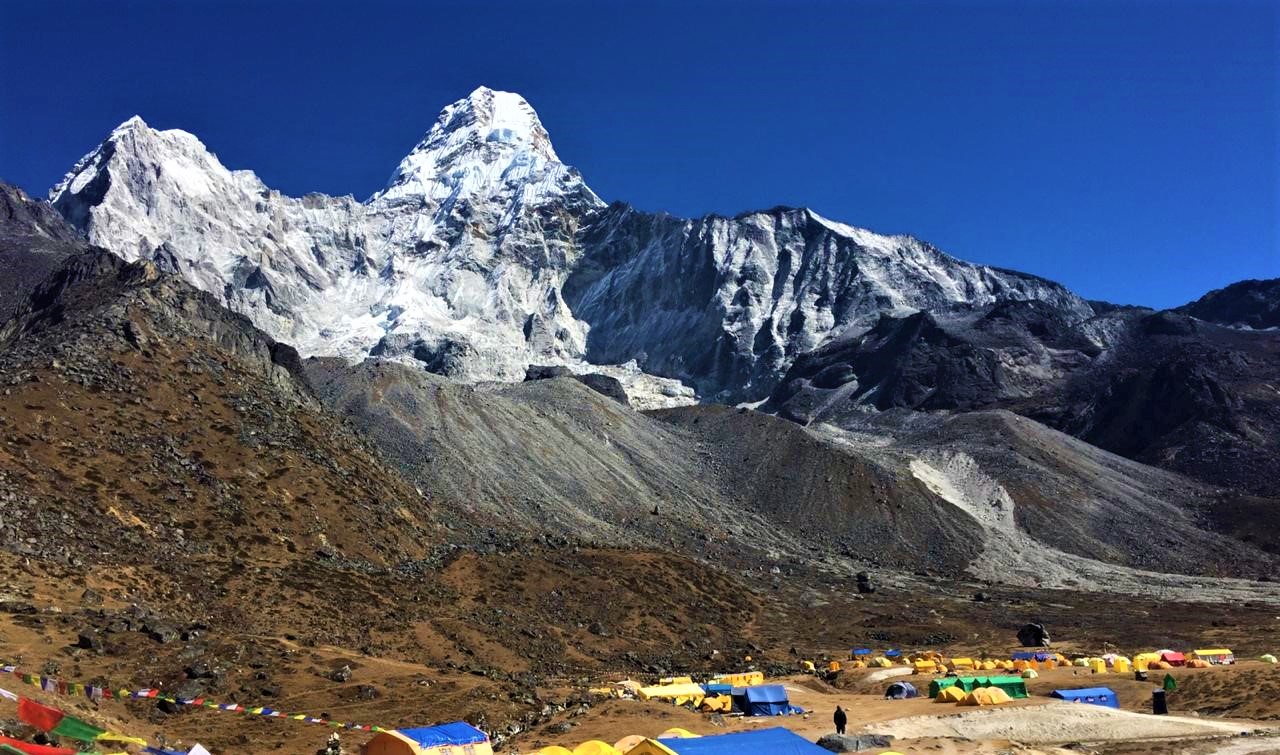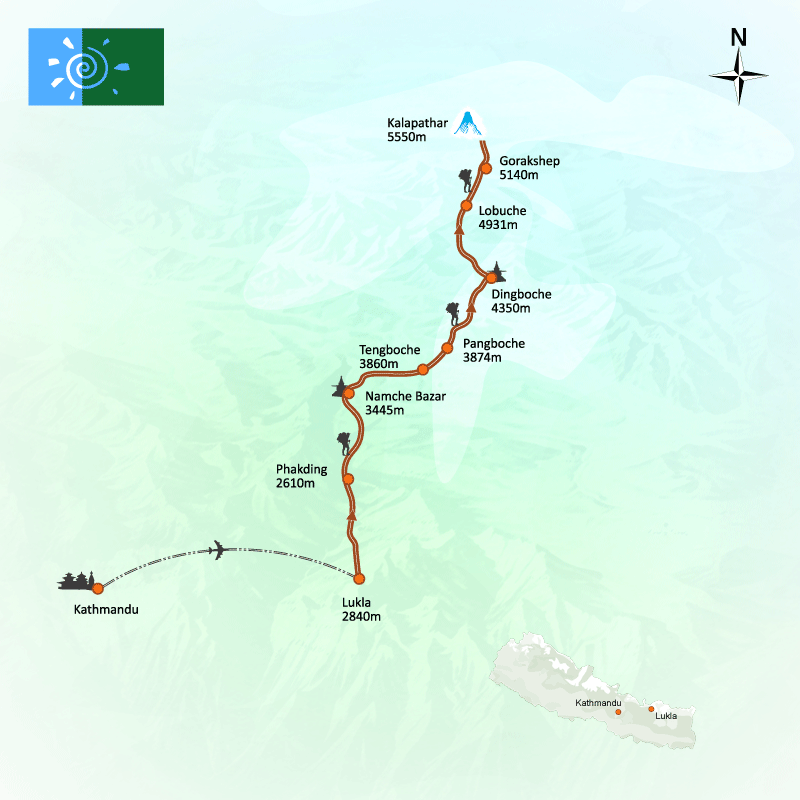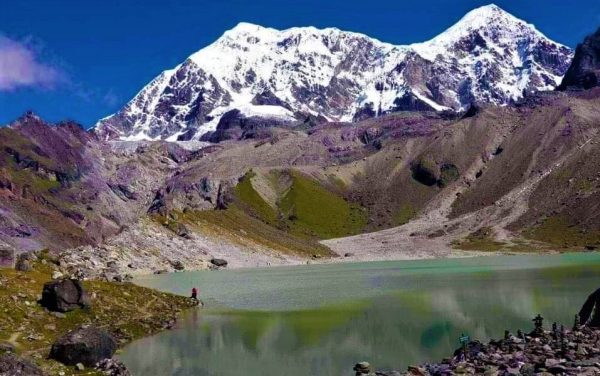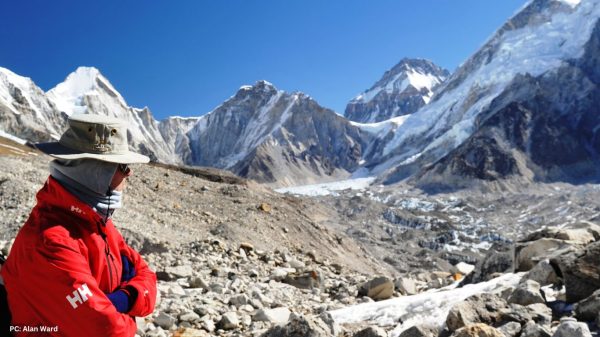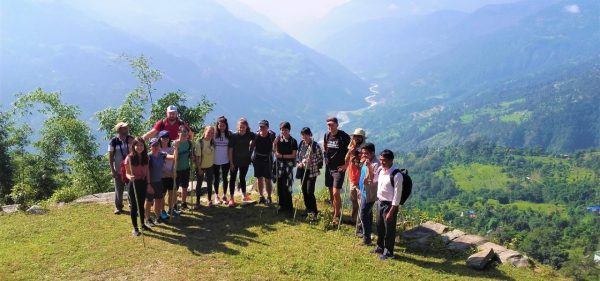Trip Facts
Trip Overview
Ama Dablam Base Camp Trek: The Ultimate Himalayan Adventure in Nepal
The Ama Dablam Base Camp Trek is one of the most popular trekking adventures in Nepal, offering breathtaking Himalayan views while avoiding the crowds of the traditional Everest Base Camp Trek.
This trek gives you the rare opportunity to experience Ama Dablam, known as the “Matterhorn of the Himalayas,” up close. Reaching Ama Dablam Base Camp at 4,800 meters (15,748 feet) provides stunning panoramic views of Mount Everest, Lhotse, Nuptse, and Ama Dablam, making it a top choice for anyone seeking an Everest region trek in Nepal.
The trail passes through iconic Himalayan villages such as Namche Bazaar, Tengboche, and Pangboche, giving trekkers ample time for acclimatization and a safe, enjoyable trekking experience. Along the route, you can immerse yourself in Sherpa culture, visit Buddhist monasteries like Tengboche Monastery, and interact with local communities, adding a cultural dimension to your Nepal trekking adventure.
Whether you are planning a Himalayan trekking trip in Nepal or looking for a scenic Everest region trek, the Ama Dablam Base Camp Trek offers the perfect combination of natural beauty, cultural immersion, and Himalayan adventure.
Why Choose the Ama Dablam Base Camp Trek with Nepal Sanctuary Treks
At Nepal Sanctuary Treks, we design personalized Ama Dablam Base Camp Trek itineraries tailored to your preferences. Whether you are trekking solo, with family, in a school group, or a small group of friends, we ensure a customized trekking experience that prioritizes your comfort, and safety.
Our experienced trekking guides, knowledgeable about the local culture and ecosystem, will take you to sacred sites like Tengboche Monastery while sharing fascinating stories about the Sherpa community.
As a Travelife Certified trekking company, we are committed to sustainable tourism in Nepal. We minimize our environmental impact and support local Sherpa communities through responsible trekking practices, eco-friendly accommodations, and contributions to local economies.
By choosing Nepal Sanctuary Treks for your Ama Dablam Base Camp Trek, you experience an unforgettable Himalayan adventure while helping preserve Nepal’s stunning landscapes and rich cultural heritage for future generations.
Best Time to Embark Ama Dablam Base Camp Trek
The best seasons for the Ama Dablam Base Camp Trek are spring (March to May) and autumn (October to December). These months offer ideal trekking conditions with clear skies, mild temperatures, and breathtaking views of the snow-capped peaks in the Khumbu region.
Planning your trek during these periods ensures stunning Himalayan scenery, excellent visibility, and a safe, enjoyable trekking experience in Nepal.
Physical Fitness for the Ama Dablam Base Camp Trek
The Ama Dablam Base Camp Trek is a moderate trek that requires good physical fitness and stamina. Trekkers should be prepared for steep climbs, long walking days, and elevations above 4,000 meters. Maintaining a steady pace and allowing time for proper acclimatization ensures a safe and enjoyable trekking experience. Proper fitness preparation allows trekkers to fully enjoy the Ama Dablam Base Camp Trek and the breathtaking Himalayan landscapes.
Book Your Amadablam Base Camp Trek with Nepal Sanctuary Treks
Experience the Himalayas like never before with the Ama Dablam Base Camp Trek, guided by Nepal Sanctuary Treks. Book your trek today and immerse yourself in the breathtaking beauty and serenity of the Khumbu region.
Choose the Ama Dablam Base Camp Trek for your next Himalayan adventure, and let Nepal Sanctuary Treks guide you every step of the way.
Below is a sample itinerary for the Ama Dablam Base Camp Trek. We can customize the itinerary sustainably to suit your preferences. For more information, contact us at info@nepalsanctuarytreks.com.
Note: Below trekking hours, altitudes and distances are approximate, and absolutely for general ideas only.


